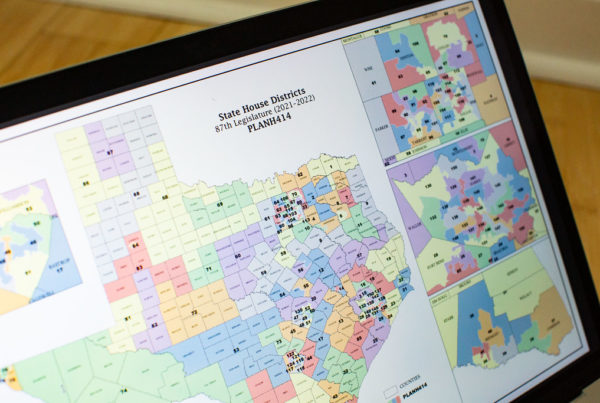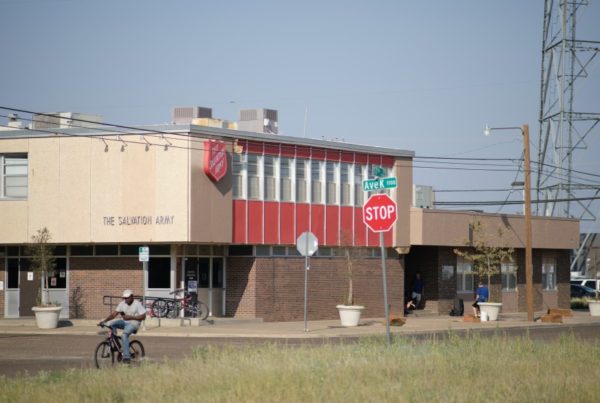From KERA:
Over the last several months, Texans have been speaking to lawmakers about how they should recreate voting districts — the maps that will ultimately determine who represents them in Congress, the state legislature and other state and local offices.
“I’m asking that please, when you redraw the lines, do so in a way that promotes democracy and participation instead of the interests of one political party,” said Galveston County resident Elizabeth McPhail in testimony on Sept. 13 before the Senate Special Committee on Redistricting.
That same message has been echoed by dozens of people who’ve testified in front of lawmakers about redistricting this year. The stakes, they’ve said, are high since this process only happens once a decade.
A special session to finalize these lines — the state’s third special session this year — begins Monday.
Booming Growth And A Delayed Start
Texas has seen huge growth since the state last redrew its voting maps.
“We have areas that have just grown dramatically. We’ve added almost 4 million people over the decade, more than any other state,” explained Lloyd Potter, the Texas state demographer, who regularly analyzes census data for the legislature.
“Most of those people are being added in the urban and suburban areas of Dallas, Fort Worth, San Antonio, Austin, Houston,” Potter said.
Under the usual circumstances, Texas lawmakers would have hashed out new maps during the regular legislative session that ended in May. Potter said the state is behind on this process for the same reason so many other things have been delayed: COVID-19.
“That pretty well shut down census operations just as they were starting. So census day is traditionally April 1, but the Census Bureau starts collecting data in March,” Potter said. In 2020, though “that operation came to a standstill before they really got up going.”
That led to logistical issues which snowballed as more time passed.
In a typical cycle, the data Texas lawmakers need to start redrawing maps would have been in hand late last year. Then, they could have hashed out redistricting in the 2021 regular legislative session.
“If you look at the constitution and how it defines how redistricting is done, it’s supposed to be done in the first regular session following the delivery of the data from the Census Bureau,” Potter said.
This unique situation has already sparked a legal challenge. Earlier this month, Texas Democrats filed a lawsuit in an attempt to stop the process.
“No way no how should the Texas legislature be part of redistricting in a special session. It’s a case of first instance,” said State Senator Roland Gutierrez of San Antonio, one of the lawmakers behind the suit. “We’ve never been in a situation where we’ve got the decennial census data as late as late summer.”
The Political Battle Ahead
Experts say the Texas GOP will drive the redistricting bus and have few obstacles to getting the maps they want. The most obvious structural advantage is that Republicans control all branches of the state government.
A draft map of state Senate districts released over the weekend sparked Democratic accusations that Republicans were diluting the influence of voters of color.
“The proposed state Senate map is a direct assault on the voting rights of minority citizens in Senate District 10 and, if adopted, it would be an act of intentional discrimination,” said Democrat Sen. Beverly Powell on Twitter. The redraw would make Powell’s district a likely Republican pickup.
But Bob Stein, a redistricting expert at Rice University, said Republicans will likely be prepared to defend against that charge in court.
“My sense is that the Republicans have built themselves, I know, an expert pool of people who will testify that this isn’t racially-polarized, this is just partisan-polarized,” Stein said.
The Supreme Court has said partisan gerrymandering is beyond the scope of federal courts.
The white population controls more than twice the state Senate districts than Hispanics do under the draft maps, according to the Texas Tribune. That’s even though the percentages of Hispanic people and white people in Texas are roughly the same.
Seth McKee, a political science professor at Oklahoma State University who spent much of his career in Texas, said gerrymandering has become much more effective in recent cycles.
“The way voters are now, in terms of their loyalty to parties, there’s not as much unpredictability in terms of drawing maps,” McKee said. “By manipulating geographic boundaries, you’re getting more representation for one party than you should.”
Stein is watching to see if the Republicans will overreach and create districts that become flippable within an election cycle or two, given the population changes in the state.
He thinks the draft state Senate maps reflect a more cautious approach.
“The boundaries are fixed. The people are not,” he said.
State lawmakers, like Dallas Democrat Senator Royce West, are ready for an incoming political battle.
“History is a good barometer of what will play out. Republicans will, frankly, draw the maps that they think that they can draw, Democrats will look at and make a determination as to whether or not they’re fair,” West said. “If they aren’t fair, then we will take them to court, and the maps will be ultimately decided by the judiciary.”
This third special session also features items on its agenda like restricting transgender student athletes, and COVID-19 relief money. Nonetheless, the once-in-a-decade redistricting process will be center stage at the Texas Capitol for the next few weeks.
Got a tip? Email Haya Panjwani at hpanjwani@kera.org or Bret Jaspers at bjaspers@KERA.org. Follow Haya @hayapanjw and Bret @bretjaspers on Twitter.













